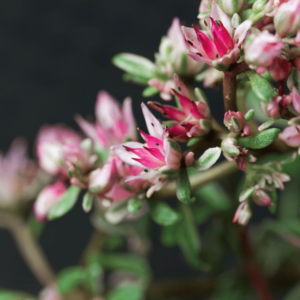A Beginner’s Guide to Growing Sedum Varieties: Tips and Techniques
Introduction
Sedum varieties are popular among gardeners, especially those just starting out. These succulent plants are easy to care for, come in a wide range of colours and shapes, and are perfect for adding interest to any garden or indoor space. In this beginner’s guide, we’ll explore the benefits of growing Sedum plants and provide tips and techniques for successful Sedum gardening.
What are Sedum Varieties?
Sedum varieties are a type of succulent plant that belongs to the Crassulaceae family. These plants are known for their fleshy leaves and ability to store water, making them well-suited to dry and arid environments. There are many different types of Sedum, each with its own unique characteristics and growing habits.
Benefits of Growing Sedum Plants
There are many benefits to growing Sedum plants, including:
- Low maintenance: Sedums are easy to care for and don’t require a lot of attention or watering.
- Drought tolerance: Sedums are able to thrive in dry conditions, making them a great choice for areas with limited rainfall or water restrictions.
- Pest resistance: Sedums are generally resistant to pests and diseases, which means they are less likely to suffer from common garden problems.
- Versatility: Sedums come in a wide range of colours, shapes, and sizes, which means they can be used in a variety of garden designs.
Types of Sedum Varieties
There are three main types of Sedum varieties: low-growing, upright, and creeping.
Low-growing Sedums

Low-growing Sedums are ideal for ground cover and rock gardens. They typically grow up to 6 inches tall and spread out horizontally. Some popular low-growing Sedum varieties include Sedum acre, Sedum album, and Sedum rupestre.
Upright Sedums

Upright Sedums are taller and more vertical than low-growing varieties. They are great for adding height and texture to garden beds and can also be grown in containers. Some popular upright Sedum varieties include Sedum spectabile, Sedum telephium, and Sedum ‘Autumn Joy’.
Creeping Sedums

Creeping Sedums are trailing plants that are often used in hanging baskets and rock gardens. They have a low, spreading habit and can quickly fill in bare areas. Some popular creeping Sedum varieties include Sedum kamtschaticum, Sedum spurium, and Sedum sexangulare.
Sedum Care
Sedum plants are easy to care for, but there are a few things to keep in mind to ensure they thrive.
Sunlight Requirements
Most Sedum varieties prefer full sun, although some can tolerate partial shade. Make sure to place your Sedum plants in a location that gets at least six hours of direct sunlight per day.
Watering and Soil
Sedums are drought-tolerant plants and don’t require a lot of water. Water them deeply once a week during the growing season and reduce watering in the winter. Sedums prefer well-draining soil and can suffer from root rot if the soil is too moist.
Fertilization
Sedums don’t require a lot of fertilizer, but you can give them a boost with a balanced, slow-release fertilizer once a year in the spring.
Propagating Sedums
One of the great things about Sedums is that they are easy to propagate. Here are three methods you can use to grow new Sedum plants:
Stem Cuttings
Take a stem cutting from your Sedum plant and let it dry out for a few days. Plant the cutting in well-draining soil and water it lightly. Keep the soil moist and the cutting should root in a few weeks.
Leaf Cuttings
Take a leaf cutting from your Sedum plant and let it dry out for a few days. Plant the leaf in well-draining soil and water it lightly. Keep the soil moist and the leaf should start to produce roots and a new plant.
Division
If your Sedum plant has grown too large, you can divide it into smaller plants. Gently remove the plant from its pot or the ground and use a clean knife to cut the plant into smaller sections. Plant each section in well-draining soil and water lightly.
Conclusion
Growing Sedum varieties is a great way to add interest and texture to your garden or indoor space. With their low-maintenance requirements and drought tolerance, they are perfect for beginners or anyone looking for an easy-to-care-for plant. Use the tips and techniques outlined in this guide to grow and propagate your own Sedum plants.




